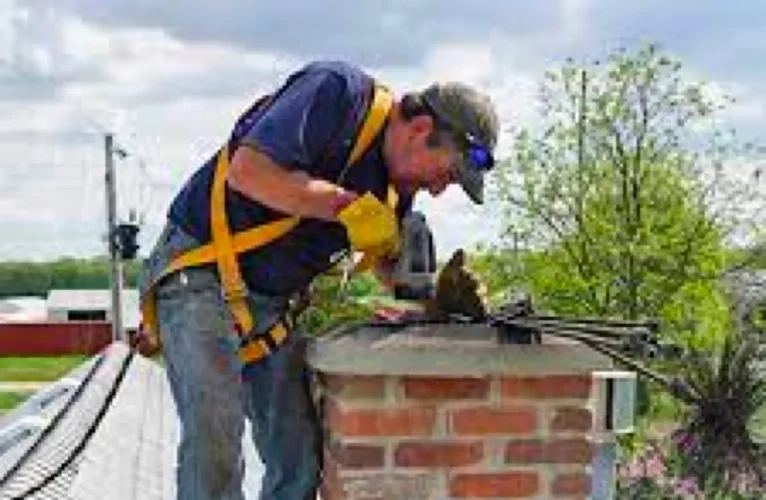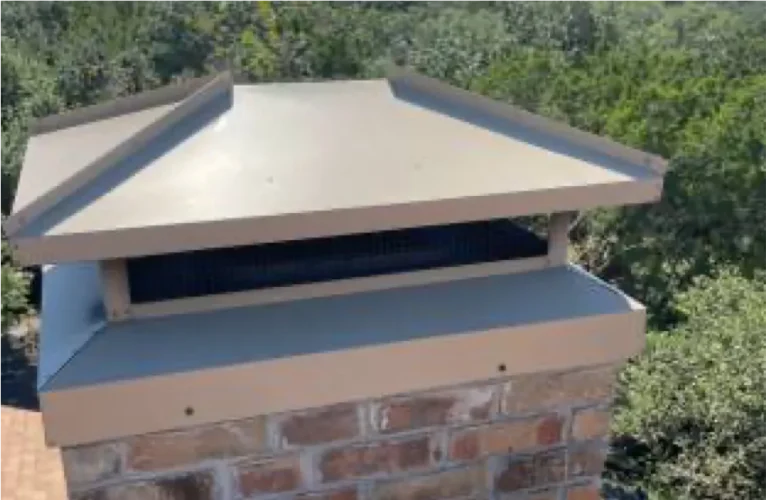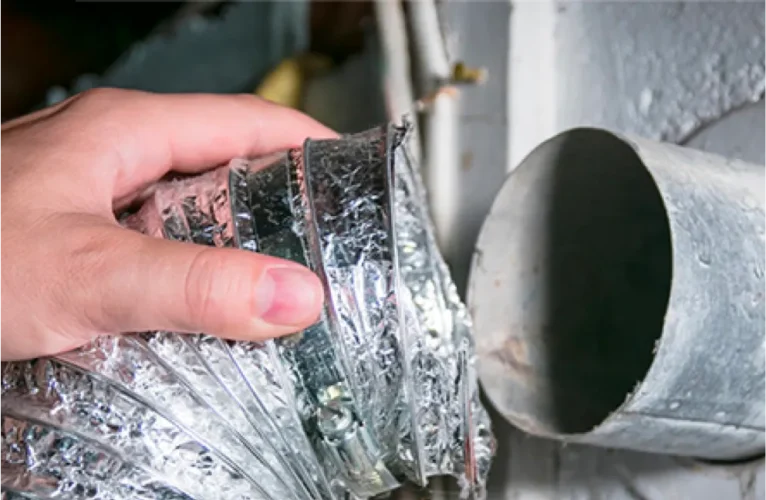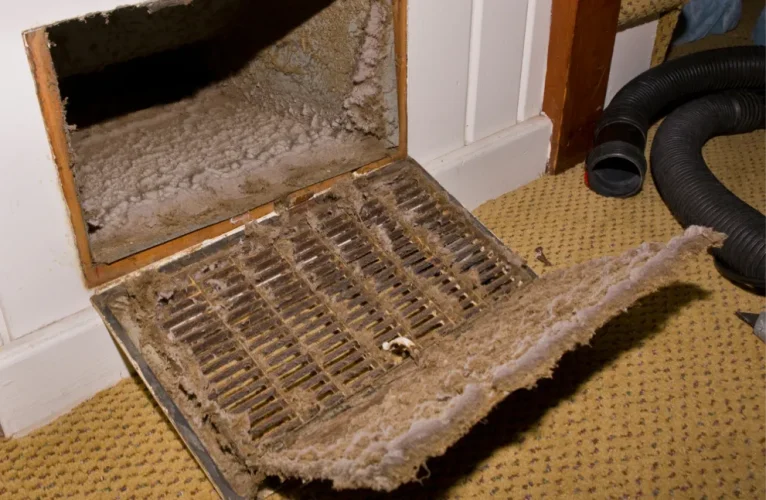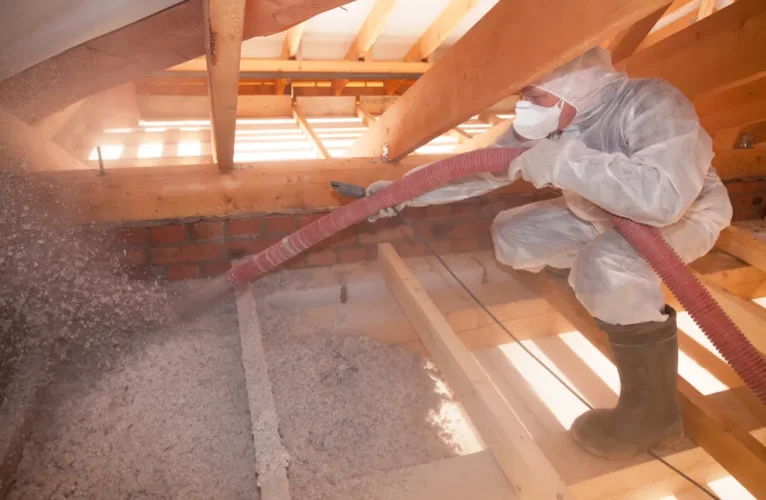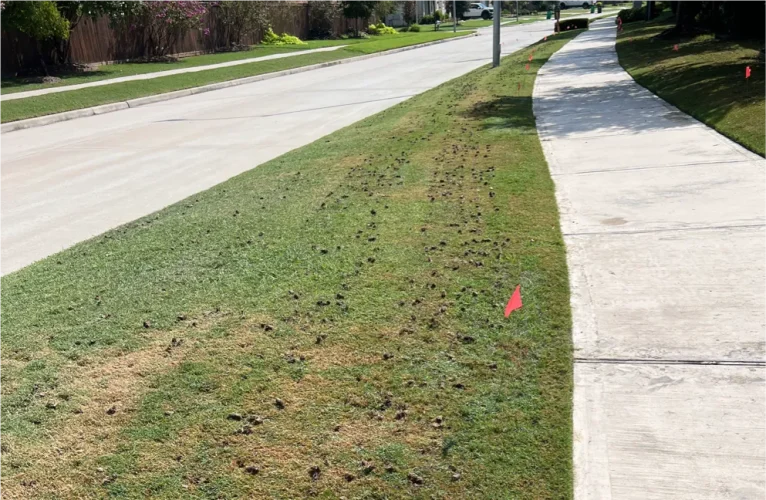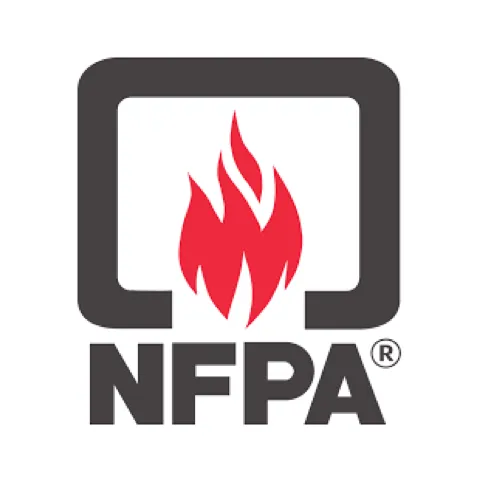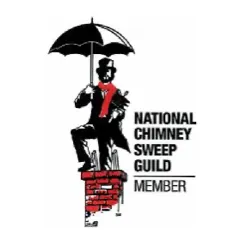Chimney Cleaning and Repairs
Professional chimney cleaning and repair services ensure that your chimney is free from hazardous creosote buildup, carbon monoxide, and potential fire hazards. Additionally, expert technicians can identify and address any structural issues or damages, ensuring the safety and efficiency of your chimney system.
Necessary Chimney Cleaning and Inspections
Annual Chimney Cleaning:
Taking care of our homes means doing chores regularly, and just like giving your house a good sweep, your chimney needs regular cleaning too. A black, tar-like substance called creosote builds up inside your chimney over time when you use it for fires. Creosote is flammable and if it accumulates too much, it can lead to chimney fires. Thus, cleaning it out at least once a year is important, not just for its functioning, but also to safeguard against fire risks.
Most people understand that clearing soot buildup is crucial for safety, but it’s equally vital for maintaining clean and healthy air in your home. Accumulated creosote can obstruct proper airflow and compromise indoor air quality, especially in winter months when many folks use their fireplaces frequently.
Professional Inspections:
It’s best to get a professional to check everything over annually as they can identify issues that might not be visible to the untrained eye. They can detect cracks or leaks that could lead to water damage or escalate into bigger problems if left untreated.
Moreover, properly maintaining your chimney can save you from expensive repair bills down the road. It’s better to address a small issue now than waiting for it to become a larger problem.
The Nature’s Own Professional Inspection Advantage
For comprehensive inspections and effective preventive measures rather than just a surface clean-up job, look no further! Our certified experts deliver thorough inspections for chimneys and also provide advice on preventative measures. This is what makes professional inspections essential – they ensure the long-term health of your fireplace and home.
Understanding the significance of annual chimney cleaning and professional inspections reveals their crucial role in safeguarding your home’s safety, structural integrity, ventilation, and ensuring clean indoor air quality.
Comprehensive Guide on Chimney Repairs
Chimneys, though they appear solid and steadfast, are as vulnerable to wear and tear as any part of the house. It’s crucial to recognize the various types of repairs needed to ensure your chimney is structurally sound and functioning efficiently.
Common Repair Types
A well-maintained chimney is a hallmark of safety and comfort in the home. However, over time, various issues may arise that require prompt attention. Here are some common types of chimney repairs that homeowners may encounter:
| Repairs Needed | Importance |
| Fixing Chimney Leaks | Essential for preventing water-related deterioration and mold growth within the chimney. |
| Repairing or Replacing Damaged Flue Liners | Necessary for maintaining safety and efficiency, avoiding toxic gases, and potential chimney fires. |
| Addressing Cracks in the Chimney Structure | Crucial in preventing further damage and maintaining the structural integrity of the chimney. |
| Resolving Issues with the Chimney Crown or Cap | Imperative for safeguarding the chimney from moisture, debris, and wildlife intrusion. |
DIY vs. Professional Repairs
While learning about these repair needs might make you feel like grabbing your tools, it’s important to understand why professional expertise is invaluable for chimney repairs:
- Precision Matters: Chimney repairs demand a high level of precision and knowledge of safety standards. Improper repairs can lead to more extensive damage or dangerous situations.
- Complex Nature: Repairing chimneys involves various complex tasks such as working with fire-resistant materials, understanding masonry techniques, and ensuring proper ventilation practices.
- Safety Considerations: Working on a chimney involves heights, heavy materials, fire hazards, and exposure to toxic substances. Professional repair technicians are equipped with safety gear and follow safety protocols to protect themselves and your property.
- Expert Tools: Professionals have access to specialized tools designed for chimney repair work. These tools help them work efficiently while ensuring quality repairs.
While there might be a sense of accomplishment in handling DIY projects around the house, certain tasks require the expertise and guidance of professionals for safe and effective outcomes—chimney repairs being one such critical area that directly impacts the safety and functionality of your home.
Importance of Certified Chimney Services
When it comes to something as crucial as your chimney, you don’t want just any service—you want the best. Certified chimney services ensure expertise in this specialized field, from installation to maintenance and repairs. But what does “certified” actually mean, and why does it matter so much?
Being certified means the technicians who work on your chimney have gone through rigorous training and testing to meet high industry standards. This is vital for ensuring the safety and integrity of your chimney system. Without proper training, a technician may miss critical problems during inspections or may not carry out cleaning and repairs to the required standard.
Certifications also ensure that the services provided adhere to the regulations and standards set by relevant industry bodies. This means that all work carried out on your chimney meets or exceeds these standards, providing you with peace of mind regarding the quality of the service. Regulations are in place for a good reason—to protect you and your home from potential hazards associated with faulty chimneys.
For instance, certified professionals follow practices that are in accordance with the National Fire Protection Association (NFPA) standards for chimneys, fireplaces, vents, and solid fuel-burning appliances. This level of adherence is essential for the safety of your home and family.
Moreover, as part of meeting these regulations, certified technicians can be well-versed with local building codes, which varies from area to area but is always essential for ensuring safe and legal installations or repairs. This knowledge can save you from potential regulatory issues down the line.
Now, while some might think that hiring a certified professional costs more than hiring someone without certification, consider that this small additional cost could save you significant expenses by preventing major damage or unsafe conditions from being overlooked.
In essence, choosing certified chimney services offers comprehensive assurance that your chimney will function safely and efficiently in compliance with all relevant industry regulations—a peace of mind that’s invaluable when it comes to your home’s safety and functionality.
Moving beyond maintenance protocols, it’s time to address post-repair resilience: safeguarding your newly rehabilitated chimney for longevity.
Post-Repair Chimney Maintenance
After the repairs to your chimney have been completed, remember that ongoing maintenance is essential for keeping it in top condition. The newly repaired components need regular checks to ensure they remain in good working order, much like winning a battle but failing to plan for the aftermath of the war.
A lot can happen after your chimney has been fixed. Changing seasons or severe weather conditions can affect the stability of the masonry, and checking for potential issues goes a long way in preventing significant damage. Regular checkups and cleanings effectively extend the lifespan of your chimney and save you from further costly repairs down the road.
Importance of Regular Inspections: Regular inspections are akin to health check-ups for your chimney. Even if everything seems fine on the surface, a closer look might reveal hidden damage or unexpected wear and tear, especially with older chimneys that have undergone repairs.
Promote Company Services
Our company understands the importance of post-repair maintenance and offers comprehensive packages that cater to all aspects of ensuring your chimney functions optimally after repairs.
Scheduled Cleanings: Following a repair, scheduled cleanings are a must. Even after any repair activity, there may still be a buildup of soot or creosote which, if left unchecked, can become hazardous. Routine cleanings not only keep the chimney safe but also maintain its efficiency and extend its life.
Leak Checks: Post-repair maintenance also includes regular checks for leaks. Whether it’s cracks in the masonry or issues with flashing and crowns, identifying any signs of leakage early on is vital to preventing water damage and preserving the integrity of your chimney.
Neglecting post-repair maintenance means risking undoing all the hard work put into your recent repairs. Keeping up with regular maintenance tasks ensures that your chimney continues to function optimally, protecting both your investment and your home from potential issues down the road.
Recognizing Signs of Chimney Trouble
It’s important to clue into warning signs that may suggest your chimney could be in trouble. Being aware of these indications ensures prompt intervention, potentially saving you from expensive repairs and even preventing catastrophic incidents. Here are some symptoms indicating you need to take action:
- Smoke Backing Up: If you notice smoke backing up into your home when you light a fire, it’s a clear sign something is wrong. This could indicate a blockage or a problem with the draft.
- Water Leaks: Water leaks around the fireplace or in the attic often point to chimney damage. Water in your chimney can lead to rust and damage the flue lining, so it’s essential to address leaks promptly.
- Foul Odors: An unpleasant odor coming from your chimney can signify several problems such as animal nests, excess moisture, creosote buildup, or even mold growth.
- Visible Damage: Cracks, gaps, or missing mortar joints on the exterior bricks can be an indication of structural damage. Even small cracks can worsen over time and compromise the integrity of your chimney.
Remember, these signs aren’t just little nuisances—it’s crucial to address them quickly before they worsen. Ignoring these warnings can lead to expensive repairs down the line or worse—dangerous hazards that put your home and family at risk.
Urgency of Action
In some cases, people might overlook these subtle signs until they become major problems mainly because the structures of a chimney are out of sight and out of mind. However, we should approach this like any aspect of home maintenance—an ounce of prevention is worth a pound of cure. For instance, if you ignore water leaks for too long, water damage may occur within your masonry and even affect your ceiling—leading to costly repairs and headaches later on.
Moreover, apart from financial considerations, these issues pose serious safety concerns. A compromised chimney can result in carbon monoxide poisoning from inefficient ventilation as well as house fires due to creosote buildup and blockage.
The bottom line is that understanding these warning signs isn’t just about protecting your property; it’s protecting the safety and well-being of those inside it.
Preventing Common Chimney Issues
Preventive measures play a critical role in maintaining your chimney’s safety and longevity. Firstly, using a spark arrester effectively prevents debris and sparks from escaping the chimney, reducing the risk of fires and carbon monoxide poisoning. Additionally, keeping the chimney cap clean ensures proper airflow and prevents blockages due to debris build-up.
Moreover, burning seasoned wood is essential to minimize creosote buildup, a major contributor to chimney fires. Ensuring the wood has been dried for six months or longer helps reduce moisture content, leading to cleaner and safer combustion.
For instance, using wet firewood can result in poor combustion and lead to more residue in the chimney, hardening into dangerous creosote deposits over time.
Our team has years of experience handling various chimney issues and offering preventive guidance to homeowners. Our website provides additional resources that help homeowners proactively address common issues such as identifying warning signs or choosing the right type of wood for burning purposes.
Homeowners should be equipped with expert advice when looking to prevent common chimney issues – after all, prevention is better than cure when it comes to preserving the safety and efficiency of your chimney.
We’ve just scratched the surface regarding preventive measures for maintaining your chimney. These practical measures reinforce the significance of regular maintenance as well as reveal that many common issues stem from avoidable circumstances rather than pure chance or inevitability.
Proactive maintenance and following preventive measures can significantly minimize potential risks associated with chimney issues. Regular inspections, using seasoned wood, and keeping your chimney equipment clean are simple steps you can take to avoid larger problems down the road.


